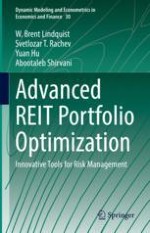2022 | OriginalPaper | Buchkapitel
11. Optimization with Performance-Attribution Constraints
verfasst von : W. Brent Lindquist, Svetlozar T. Rachev, Yuan Hu, Abootaleb Shirvani
Erschienen in: Advanced REIT Portfolio Optimization
Aktivieren Sie unsere intelligente Suche, um passende Fachinhalte oder Patente zu finden.
Wählen Sie Textabschnitte aus um mit Künstlicher Intelligenz passenden Patente zu finden. powered by
Markieren Sie Textabschnitte, um KI-gestützt weitere passende Inhalte zu finden. powered by
